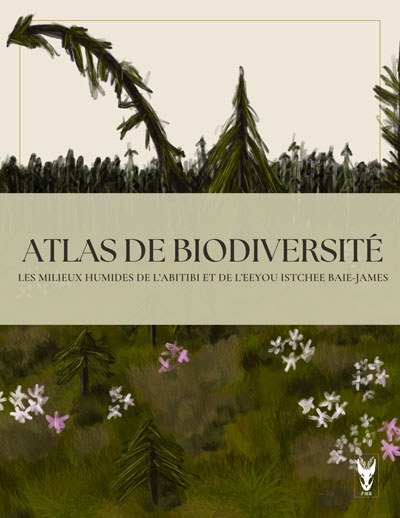
Michel Labrecque
Chercheur associé
Écophysiologie
Université de Montréal
Jardin botanique de Montréal
Bureau C-313
4101 Sherbrooke Est
Montréal (Québec) H1X 2B2
Tel: 514-872-1862
FORMATION
- Ph.D.
- M.Sc. en sciences biologiques, 1984 (Université de Montréal)
THÈMES DE RECHERCHE
Écophysiologie d’espèces ligneuses: productivité et rendement de plantations d’arbres à croissance rapide pour des fins de production de biomasse. Nutrition et assimilation sous diverses conditions environnementales. Restauration de sites contaminés, phytoremédiation, décontamination de boues municipales.
Les études conduites par notre laboratoire s’intéressent au fonctionnement physiologique des végétaux et abordent diverses problématiques environnementales. Ainsi au cours des dernières années, de nombreux projets de recherche appliquée ont été conduits permettant d’explorer des éléments de solution à divers problèmes environnementaux mais favorisant également une meilleure compréhension du fonctionnement des plantes.
L’assimilation des éléments nutritifs, de contaminants ou des éléments traces constituent des thématiques qui reviennent souvent dans les problématiques abordées. Parfois il s’agit d’étudier les impacts d’apports de fertilisants organiques sous diverses formes (boues, lisiers, etc.) sur les plantes et l’environnement, parfois on s’intéressera davantage à la présence de métaux lourds, qu’ils soient présents dans les engrais organiques ou contenus dans les sols sous forme de contaminants. Plus récemment, nous avons entrepris des études sur des milieux contaminés par des polluants organiques (HAP, BPC, etc.). Dans ce contexte, les études conduites intègrent des approches génomiques et bioinformatiques et sont réalisées en collaboration avec plusieurs chercheurs d’autres disciplines. Ces études ont pour objectifs de mieux comprendre les interactions entre les entre les microorganismes et le système racinaire des plantes en présence de tels polluants.
Notre équipe est également intéressée par les cultures intensives sur courtes rotations (CICR) impliquant notamment des saules (Salix), tirant souvent profit des caractéristiques très particulières de ces espèces: rapidité de croissance, grand pouvoir d’enracinement et facilité exceptionnelle à pouvoir se propager végétativement. Ici, nous nous intéressons à la faisabilité opérationnelle de ce type de culture et à l’accroissement des rendements en biomasse tant par la sélection de meilleurs cultivars que par l’amélioration des techniques de culture.
PUBLICATIONS
Vous pouvez télécharger toutes mes références bibliographiques en format BibTeX, BibTeX-CSV, FRQNT ou EndNote
Livres
Aucun
Chapitres de livre
Aucun
Livres, numéros spéciaux et actes de colloques publiés à titre d'éditeur
- Labrecque, M., Eds. (2001) L'arbre 2000 The Tree. Éditions Isabelle Quentin. 375 p
- Gaudet, M., Beaudoin, M.F., Rocray, P.E. (1997) Les arbres de Montréal. (Labrecque, M., Eds.) Fides. 175 p
Articles révisés par un comité de lecture
- Gomes, M.P., Le Manac'h, S.G., Moingt, M., Smedbol, E., Paquet, S., Labrecque, M., Lucotte, M., Juneau, P. (2016) Impact of phosphate on glyphosate uptake and toxicity in willow. Journal of Hazardous Materials, 304:269-279
- Gomes, M.P., Maccario, S., Lucotte, M., Labrecque, M., Juneau, P. (2015) Consequences of phosphate application on glyphosate uptake by roots: Impacts for environmental management practices. Science of the Total Environment, 537:115-119
- Berthod, N., Brereton, N.J.B., Pitre, F.E., Labrecque, M. (2015) Five willow varieties cultivated across diverse field environments reveal stem density variation associated with high tension wood abundance. Frontiers in Plant Science, 6(OCTOBER)
- Gonzalez, E., Brereton, N.J.B., Marleau, J., Guidi Nissim, W., Labrecque, M., Pitre, F.E., Joly, S. (2015) Meta-transcriptomics indicates biotic cross-tolerance in willow trees cultivated on petroleum hydrocarbon contaminated soil. BMC Plant Biology, 15(1)
- Lauron-Moreau, A., Pitre, F.E., Argus, G.W., Labrecque, M., Brouillet, L. (2015) Erratum: Phylogenetic relationships of American Willows (Salix L., Salicaceae) (PLOS ONE 10:9 (e0138963) DOI:10.1371/journal.pone.0138963). PLOS ONE, 10(9)
- Guidi Nissim, W., Jerbi, A., Lafleur, B., Fluet, R., Labrecque, M. (2015) Willows for the treatment of municipal wastewater: Performance under different irrigation rates. Ecological Engineering, 81:395-404
- Grenier, V., Pitre, F.E., Guidi Nissim, W., Labrecque, M. (2015) Genotypic differences explain most of the response of willow cultivars to petroleum-contaminated soil. Trees - Structure and Function, 29(3):871-881
- Jerbi, A., Nissim, W.G., Fluet, R., Labrecque, M. (2015) Willow Root Development and Morphology Changes Under Different Irrigation and Fertilization Regimes in a Vegetation Filter. Bioenergy Research, 8(2):775-787
- Lauron-Moreau, A., Pitre, F.E., Argus, G.W., Labrecque, M., Brouillet, L. (2015) Phylogenetic relationships of American Willows (Salix L., Salicaceae). PLOS ONE, 10(4)
- Nissim, W.G., Hasbroucq, S., Kadri, H., Pitre, F.E., Labrecque, M. (2015) Potential of Selected Canadian Plant Species for Phytoextraction of Trace Elements From Selenium-Rich Soil Contaminated by Industrial Activity. International Journal of Phytoremediation, 17(8):745-752
- Mosseler, A., Major, J.E., Labrecque, M., Larocque, G.R. (2014) Allometric relationships in coppice biomass production for two North American willows (Salix spp.) across three different sites. Forest Ecology and Management, 320:190-196
- Desjardins, D., Nissim, W.G., Pitre, F.E., Naud, A., Labrecque, M. (2014) Distribution patterns of spontaneous vegetation and pollution at a former decantation basin in southern Québec, Canada. Ecological Engineering, 64:385-390
- Mosseler, A., Major, J.E., Labrecque, M. (2014) Growth and survival of seven native willow species on highly disturbed coal mine sites in eastern Canada. Canadian Journal of Forest Research, 44(4):340-349
- Guidi Nissim, W., Pitre, F.E., Kadri, H., Desjardins, D., Labrecque, M. (2014) Early Response of Willow to Increasing Silver Concentration Exposure. International Journal of Phytoremediation, 16(7-8):660-670
- Guidi Nissim, W., Voicu, A., Labrecque, M. (2014) Willow short-rotation coppice for treatment of polluted groundwater. Ecological Engineering, 62:102-114
- Gomes, M.P., Smedbol, E., Chalifour, A., Henault-Ethier, L., Labrecque, M., Lepage, L., Lucotte, M., Juneau, P. (2014) Alteration of plant physiology by glyphosate and its by-product aminomethylphosphonic acid: An overview. Journal of Experimental Botany, 65(17):4691-4703
- Mosseler, A., Major, J.E., Labrecque, M. (2014) Genetic by environment interactions of two North American Salix species assessed for coppice yield and components of growth on three sites of varying quality. Trees - Structure and Function, 28(5):1401-1411
- Park, Y.-I., Labrecque, M., Lavoie, J.-M. (2013) Influence of elevated CO2 and municipal wastewater feed on the productivity, morphology, and chemical composition of arthrospira (spirulina) platensis. ACS Sustainable Chemistry and Engineering, 1(11):1348-1356
- Fillion, M., Brisson, J., Guidi, W., Labrecque, M. (2011) Increasing phosphorus removal in willow and poplar vegetation filters using arbuscular mycorrhizal fungi. Ecological Engineering, 37(2):199-205
- Teodorescu, T.I., Guidi, W., Labrecque, M. (2011) The use of non-dormant rods as planting material: A new approach to establishing willow for environmental applications. Ecological Engineering, 37(9):1430-1433
- Cavanagh, A., Gasser, M.O., Labrecque, M. (2011) Pig slurry as fertilizer on willow plantation. Biomass and Bioenergy, 35(10):4165-4173
- Guidi, W., Labrecque, M. (2010) Effects of High Water Supply on Growth, Water Use, and Nutrient Allocation in Willow and Poplar Grown in a 1-Year Pot Trial. Water Air and Soil Pollution, 207(1-4):85-101
- Fillion, M., Brisson, J., Teodorescu, T.I., Sauve, S., Labrecque, M. (2009) Performance of Salix viminalis and Populus nigra × Populus maximowiczii in short rotation intensive culture under high irrigation. Biomass and Bioenergy, 33(9):1271-1277
- Vujanovic, V., Labrecque, M. (2008) Potentially pathogenic and biocontrol Ascomycota associated with green wall structures of basket willow (Salix viminalis L.) revealed by phenotypic characters and ITS phylogeny. Biocontrol, 53(2):413-426
- Roy, S., Labelle, S., Mehta, P., Mihoc, A., Fortin, N., Masson, C., Leblanc, R., Chateauneuf, G., Sura, C., Gallipeau, C. et al. (2005) Phytoremediation of heavy metal and PAH-contaminated brownfield sites. Plant and Soil, 272(1-2):277-290
- Leblanc, R., Châteauneuf, G., Sura, C., Labrecque, M., Galipeau, C., Greer, C., Delisle, S., Roy, S., Labelle, S., Olsen, C. (2003) Phytoremédiation des sols contaminés aux métaux lourds et aux hydrocarbures récalcitrants. Vecteur Environnement, 36:60-62
- Labrecque, M., Teodorescu, T.I., Daigle, S. (1998) Early performance and nutrition of two willow species in short-rotation intensive culture fertilized with wastewater sludge and impact on the soil characteristics. Canadian Journal of Forest Research, 28(11):1621-1635
- Labrecque, M., Teodorescu, T.I., Daigle, S. (1997) Biomass productivity and wood energy of Salix species after 2 years growth in SRIC fertilized with wastewater sludge. Biomass and Bioenergy, 12(6):409-417
- Cogliastro, A., Halle, A., Labrecque, M., Daigle, S. (1995) Evaluation of 3 containers for the production of large hardwood seedlings. Forestry Chronicle, 71(4):459-465
- Labrecque, M., Teodorescu, T.I., Daigle, S. (1995) Effect of waste-water sludge on growth and heavy-metal bioaccumulation of 2 salix species. Plant and Soil, 171(2):303-316
- Barabe, D., Daigle, S., Labrecque, M., Starnaud, M. (1995) Allometry in the histogenesis of prunus fruits (rosaceae). Canadian Journal of Botany-Revue Canadienne De Botanique, 73(2):299-306
- Labrecque, M., Teodorescu, T.I., Babeux, P., Cogliastro, A., Daigle, S. (1994) Impact of herbaceous competition and drainage conditions on the early productivity of willows under short-rotation intensive culture. Canadian Journal of Forest Research, 24(3):493-501
- Labrecque, M., Teodorescu, T.I., Cogliastro, A., Daigle, S. (1993) Growth-patterns and biomass productivity of 2 salix species grown under short-rotation intensive culture in southern quebec. Biomass and Bioenergy, 4(6):419-425
- Labrecque, M., Bellefleur, P., Simon, J.P., Popovich, S. (1989) Influence of light conditions on the predetermination of foliar characteristics in betula-alleghaniensis britton. Annals of Forest Science, 46:S497-S501
- Labrecque, M., Barabe, D., Vieth, J. (1985) Development of the fruit of prunus-virginiana (rosaceae). Canadian Journal of Botany, 63(2):242-251
- Labrecque, M., Barabe, D., Vieth, J. (1985) Development of the fruit of prunus-pensylvanica lf (rosaceae). Annales des sciences naturelles-botanique et biologie végétale, 7(1):39-53
- Barabe, D., Labrecque, M. (1985) Vasculature of the flower of orontium-aquaticum. Bulletin De La Societe Botanique De France-Lettres Botaniques, 132(2):133-145
- Labrecque, M., Barabe, D. (1984) Development of the fruit of prunus-serotina (rosaceae). Canadian Journal of Botany, 62(2):195-206
- Labrecque, M., Barabe, D. (1984) Development of the endosperm and the embryo during the maturation of the seed of prunus-serotina. Comptes-rendus de l'académie des sciences - Serie iii - Sciences de la vie, 298(4):97-102
- Barabe, D., Labrecque, M., Chretien, L. (1984) Vascularization of the flower of anthurium-lhotzkyanum (araceae). Comptes-rendus de l'académie des sciences - Serie iii - Sciences de la vie, 299(15):651-656
- Barabe, D., Labrecque, M. (1984) Vascularization of the flower of lysichitum-camtschatcense (araceae). Canadian Journal of Botany, 62(10):1971-1983
- Barabe, D., Labrecque, M. (1984) On the relationship between the size of fruits and their vascular system - the case of prunus. Comptes-rendus de l'académie des sciences - Serie iii - Sciences de la vie, 298(15):427- 432
- Barabe, D., Labrecque, M. (1983) Vascularization of the flower of calla-palustris (araceae). Canadian Journal of Botany, 61(6):1718-1726
Articles publiés dans des actes de colloque (proceedings)
Aucun
Rapports scientifiques, manuels et autres
Aucun
Thèses, mémoires et essais
- Labrecque, M. (1984) Développement et anatomie comparés : du fruit de prunus pensylvanica, prunus serotina et prunus virginiana. Mémoire de maîtrise, Université de Montréal
Thèses, mémoires et essais supervisés
Aucun
Articles non révisés par un comité de lecture
Aucun










